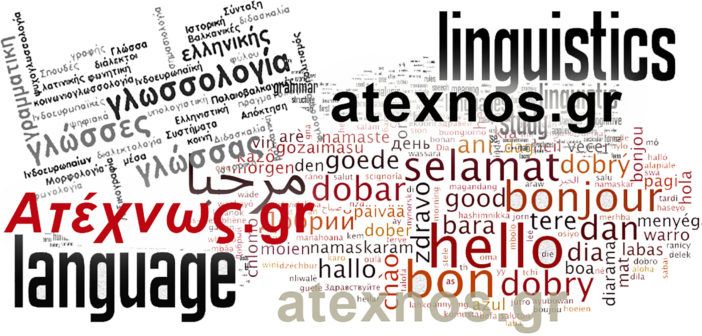Crete, the largest of the Greek islands, boasts a vibrant cultural heritage that is deeply rooted in its history, traditions, and, notably, its language. The Cretan dialect, known for its unique phonetic, lexical, and grammatical characteristics, is a vital part of the island’s identity. This dialect has evolved over centuries, influenced by various civilizations that have left their mark on Crete. Exploring Cretan dialects and local expressions offers a fascinating insight into the island’s linguistic landscape and the cultural nuances that shape its people’s everyday lives.
The Historical Context of the Cretan Dialect
The Cretan dialect, a branch of the broader Greek language, has been shaped by the island’s tumultuous history and diverse influences. From the ancient Minoans to the Venetians and Ottomans, each era has contributed to the linguistic tapestry of Crete.
Ancient Roots
- Minoan Civilization: The earliest form of writing in Crete is the undeciphered Linear A script of the Minoan civilization (circa 2000-1450 BCE). Although not directly related to the Greek language, it sets the foundation for Crete’s rich linguistic history.
- Mycenaean Greek: Linear B, used by the Mycenaeans (circa 1450-1200 BCE), represents the earliest form of Greek on the island. This period marks the beginning of Greek linguistic influence in Crete.
Byzantine and Medieval Influences
- Byzantine Period: During the Byzantine era (330-1204 CE), the Greek language in Crete evolved, incorporating ecclesiastical and administrative terms. The island’s isolation also helped preserve older forms of Greek.
- Venetian and Ottoman Periods: Venetian (1204-1669) and Ottoman (1669-1898) rule introduced numerous loanwords and expressions into the Cretan dialect, particularly in areas such as administration, trade, and daily life.
Characteristics of the Cretan Dialect
The Cretan dialect is distinguished by several phonetic, lexical, and grammatical features that set it apart from standard Modern Greek.
Phonetic Features
- Vowel Changes: One notable feature is the transformation of certain vowels. For example, the vowel “e” in standard Greek often becomes “i” in Cretan. Thus, “μέλι” (honey) is pronounced “μίλι.”
- Consonant Shifts: Consonant sounds can also differ. The “ch” sound in standard Greek is often softened or omitted in Cretan, leading to words like “έχω” (I have) being pronounced “έω.”
Lexical Variations
- Unique Vocabulary: The Cretan dialect has a rich lexicon with many words and expressions unique to the island. For instance, “καλιαρντό” (kaliarntó) means good-looking or well-dressed, a term not commonly used elsewhere in Greece.
- Loanwords: The influence of Venetian and Ottoman rule is evident in the numerous loanwords integrated into the dialect. For example, “καπέλο” (kapélo) from Italian means hat, and “μπακλαβάς” (baklavás) from Turkish refers to the famous pastry.
Grammatical Features
- Verb Conjugation: Some verb forms in Cretan dialect differ from standard Greek, often simplifying or altering conjugations. For instance, the verb “to eat” in Cretan can be “τρώγω” (trógo) instead of the standard “τρώω” (tróo).
- Definite Articles: The use of definite articles can also vary, sometimes being dropped or replaced in ways that reflect older forms of Greek.
Local Expressions and Idioms
Cretan expressions and idioms reflect the island’s unique cultural and social context. These sayings often capture the wisdom, humor, and values of the Cretan people.
Proverbs and Sayings
- “Όταν πίνει το λάδι του, βρίσκει τη σοφία του.” This saying translates to “When one drinks their olive oil, they find their wisdom,” reflecting the importance of olive oil in Cretan culture and its association with health and wisdom.
- “Ο κόσμος είναι μικρός.” Meaning “The world is small,” this expression underscores the close-knit nature of Cretan communities and the interconnectedness of people’s lives.
Humorous Expressions
- “Χαρά στο πράμα.” This phrase, meaning “Big deal,” is often used humorously to downplay something perceived as trivial or insignificant.
- “Σαν τη μύγα μες στο γάλα.” Translating to “Like a fly in the milk,” this idiom describes someone who stands out awkwardly or is out of place, reflecting Cretan humor and observation.
The Role of the Cretan Dialect in Modern Times
Despite the pressures of globalization and the dominance of standard Modern Greek, the Cretan dialect remains vibrant, particularly in rural areas and among older generations.
Preservation Efforts
- Cultural Organizations: Various cultural organizations and local institutions actively promote the preservation and teaching of the Cretan dialect through workshops, literature, and performances.
- Education: Efforts to incorporate elements of the Cretan dialect into educational curricula aim to instill a sense of pride and continuity among younger generations.
Media and Literature
- Radio and Television: Local radio stations and television programs often feature the Cretan dialect, ensuring its presence in contemporary media.
- Literary Works: Cretan authors and poets frequently write in the dialect, contributing to its preservation and appreciation. Notable figures like Nikos Kazantzakis have celebrated the dialect in their works.
Conclusion
The Cretan dialect and local expressions are a vital part of the island’s cultural heritage, reflecting its history, identity, and the resilience of its people. From ancient roots to modern preservation efforts, the dialect embodies the richness and diversity of Cretan life. By exploring and appreciating this unique linguistic tradition, we gain a deeper understanding of Crete’s enduring cultural legacy and the importance of safeguarding it for future generations.


